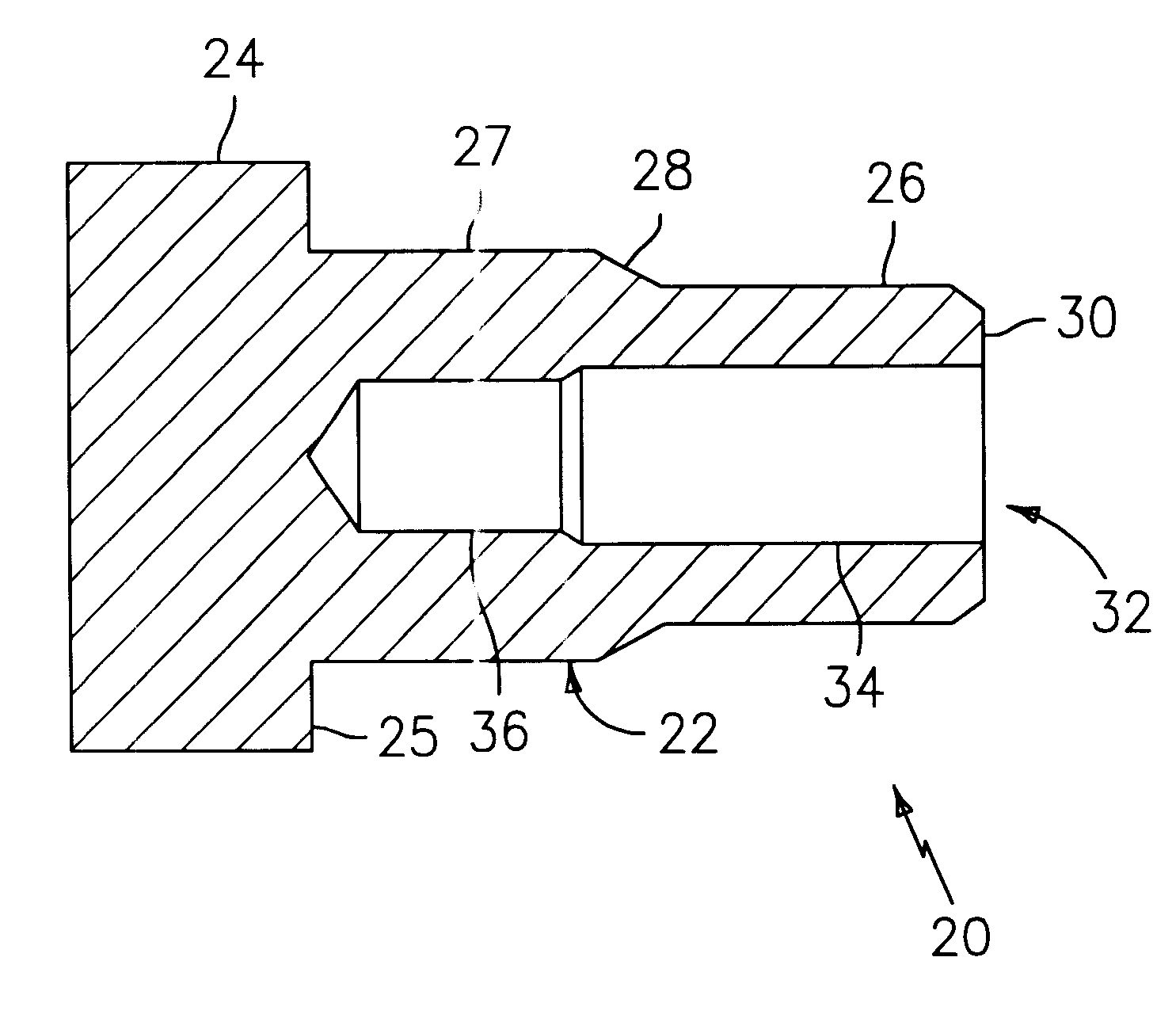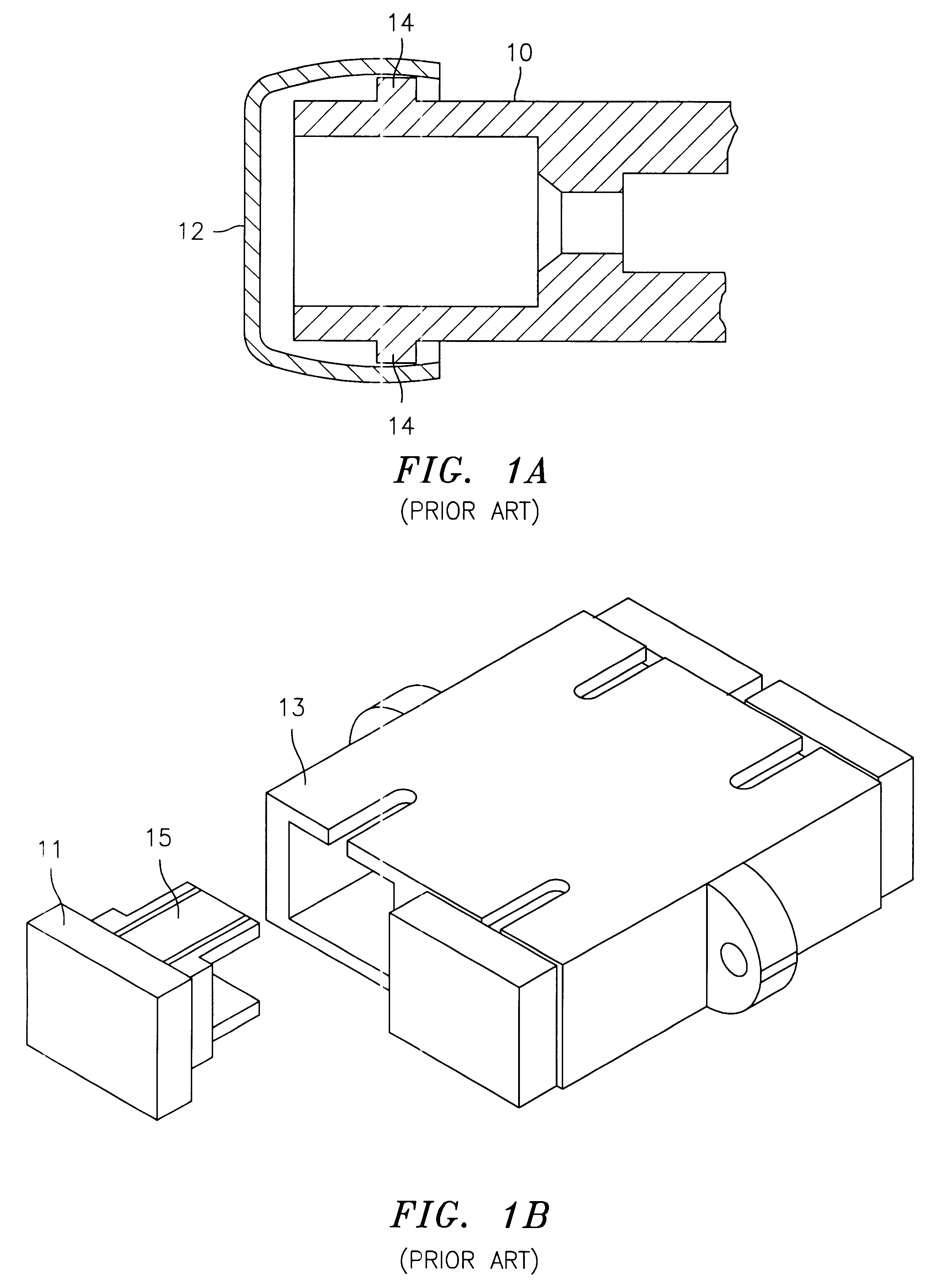Dust caps for use with telecommunications adapters and connectors
a technology for telecommunications adapters and connectors, applied in the field of dust caps, can solve the problems of dust entering into the tip, no surface, and no style, and achieve the effect of reducing the diameter and preventing the contamination of the tip
- Summary
- Abstract
- Description
- Claims
- Application Information
AI Technical Summary
Benefits of technology
Problems solved by technology
Method used
Image
Examples
Embodiment Construction
FIG. 2 is a cross-sectional view of a dust cap, shown generally at 20, having a body 22. A first end of body 22 is integrally joined to a dust cap head 24. Dust cap head 24 is generally cylindrical and has a diameter greater than body 22. It is understood that dust cap head 24 may have other geometries as long as an outer dimension is greater than the diameter of body 22. This provides a shoulder 25 for grasping dust cap 20 and facilitates installation and removal of the dust cap. The body 22 includes a first cylindrical section 27 and a second cylindrical section 26. The second cylindrical section 26 has a diameter less than the first cylindrical section and provides a lead in upon installing the dust cap 20. A tapered section 28 provides the transition between first cylindrical section 27 and second cylindrical section 26. The second end of body 22 has a sealing face 30 for contacting a surface in the ST adapter as shown in FIG. 3.
As shown in FIG. 3, the dust cap 20 fits within th...
PUM
 Login to View More
Login to View More Abstract
Description
Claims
Application Information
 Login to View More
Login to View More - R&D
- Intellectual Property
- Life Sciences
- Materials
- Tech Scout
- Unparalleled Data Quality
- Higher Quality Content
- 60% Fewer Hallucinations
Browse by: Latest US Patents, China's latest patents, Technical Efficacy Thesaurus, Application Domain, Technology Topic, Popular Technical Reports.
© 2025 PatSnap. All rights reserved.Legal|Privacy policy|Modern Slavery Act Transparency Statement|Sitemap|About US| Contact US: help@patsnap.com



